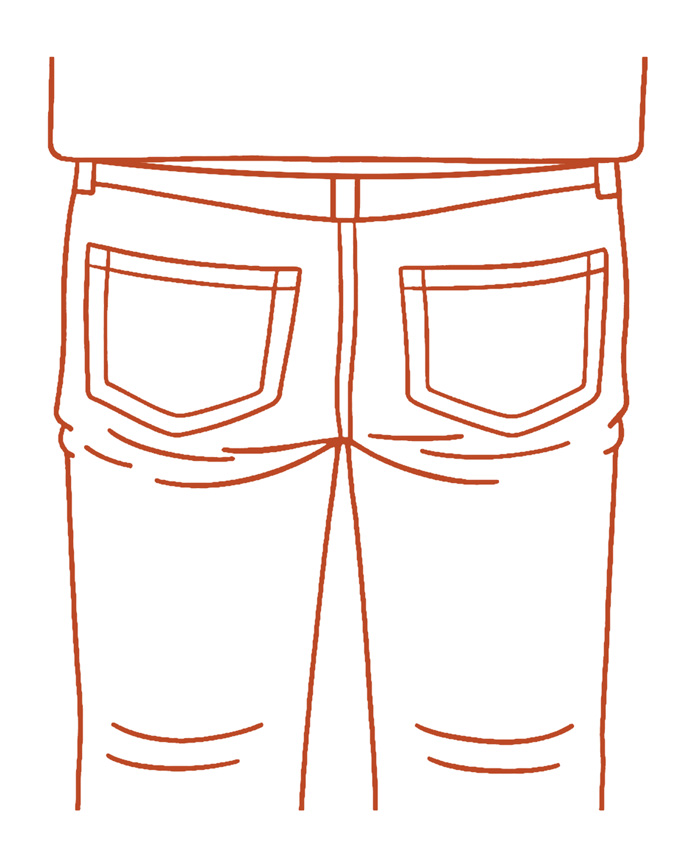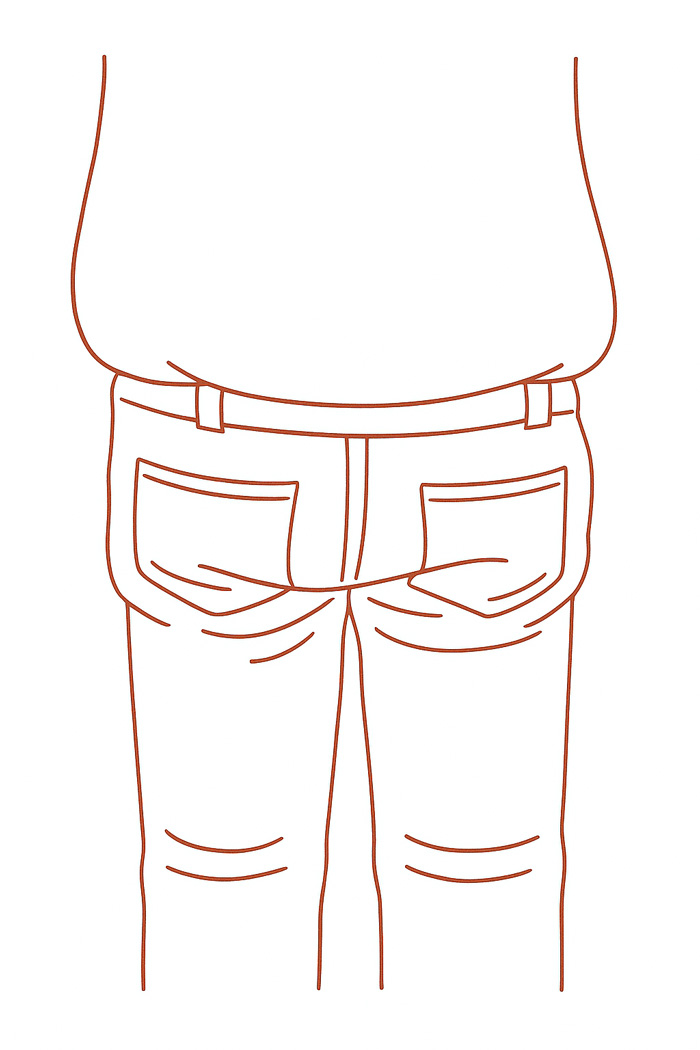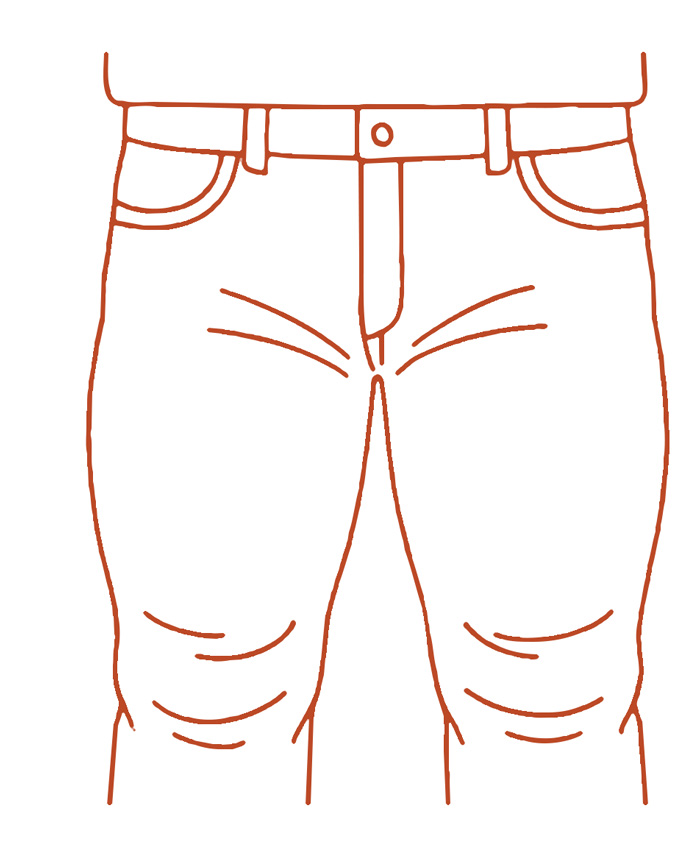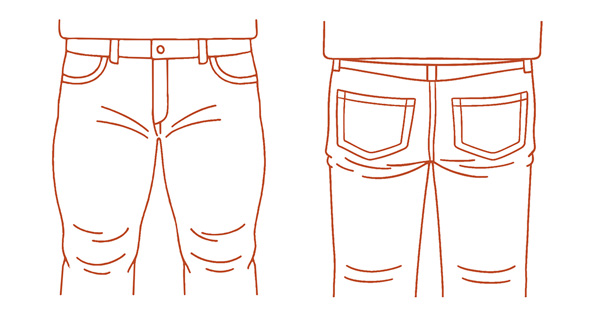Constantly frustrated pants don’t fit the way you want them to?
Most guys assume if their pants don’t fit, they just need a different waist size. But that’s rarely the real issue. The truth is, most off-the-rack pants fail in three key areas, none of which your belt can fix.
Here’s what’s actually going wrong, why it happens, and how to fix it.
1. The Rise Is Too Low
The problem: You feel like you’re constantly adjusting your pants, they slide down when you sit, or your shirt billows out over the waistband.
Why it happens: Most commonly available modern pants, especially casual ones like jeans and chinos, are cut with a low or low-mid pant rise as a result of trends of the first two decades of the 2000s. Like leg opening or waist size, rise is an aspect of pant design that determines how long or short the front part of your pants is, from the waist button to the crotch seam.
But that short rise doesn’t work for everyone, especially if you have longer legs, carry weight in your midsection, or just feel unbalanced.

The fix: Look for a higher rise, commonly labeled “classic rise,” “regular rise,” or just measured at 11 inches or more from crotch seam to waistband.
Options like Buck Mason Full Saddle and Ford fits, and Levi’s 501 or 505 often run a little higher than the average cuts. Try on in person if possible, or check product measurements carefully.
2. There’s Too Much Room in the Seat
The problem: Your pants sag in the back, bunch under your butt, or just look off. Like the bottom half of your outfit doesn’t match the top. That “saggy butt” effect usually comes from one of two things:
A. The pants are cut for a different shape than yours.

If you’ve got a flatter backside, and the pants were built for someone with more shape back there, the extra fabric just hangs.
The fix: Look for pants with a trimmer seat and a gentle taper from hip to thigh. You want the fabric to follow your shape, not assume a different one.
Try: Bonobos Slim chino, J.Crew 484, or Levi’s 511 if you’re okay with a bit of stretch. These cuts offer clean lines without clinging.
Avoid: “Relaxed,” “roomy,” or “classic fit” labels—most of those assume more volume in the seat than you have.
B. You’re wearing your pants lower than they were meant to be worn.

This one’s less about body type and more about comfort—or avoidance. A lot of guys wear their pants low on the hips to stay clear of their midsection. Sometimes it’s habit. But often, it’s a quiet strategy to avoid sizing up or drawing attention to weight around the belly.
But here’s the problem: that move breaks the intended drape of the pant. The waistband bites into the middle of your torso, the seat sags, and the proportions fall apart. The look ends up top-heavy and deflated at the bottom—like the modern version of those old-timey pants with the butt flap hanging open.
The fix: Wear the pants where they were designed to sit—typically higher than you think. And if that means sizing up in the waist, do it. That’s not giving in; it’s choosing clothes that actually support how your body moves.
Try: Levi’s 541 Athletic Fit or Flint & Tinder HB Straight. These have slightly more room in the top block.
Avoid: Low-rise cuts, ultra-slim fits, and anything you have to cinch down just to stay up.
The Thigh Fit Is Throwing Off Everything Else
The problem: Pants feel tight across your thighs but loose at the calf, or the fabric pulls diagonally from the crotch outward (called “whiskering”).

Why it happens: You’ve got muscular thighs or carry more weight up top, but you’re trying to wear pants cut for skinny guys.
The fix: You want room where you need it—without looking baggy. Search for Athletic Fit, Tapered Fit, or any pant that offers “room in the thigh with a tailored leg.”
Go-to brands: Barbell Apparel, Flint and Tinder’s 365 Pant in Straight or Tapered, Gap’s Athletic Taper, or Bonobos’ Athletic Fit.
Avoid: Skinny fits, ultra-slim cuts, or jeans with more than 2 percent stretch (they’ll cling and then sag).
Final Note
Stop blaming your body for bad pants. Most mass-market fits are built for a mythical average that doesn’t reflect reality. Once you understand these three variables (rise, seat, and thigh) you can skip the guessing, and actually buy pants that fit the way you move.


